How Animals Survive Extreme Heat and Cold Weather Conditions in the Wild
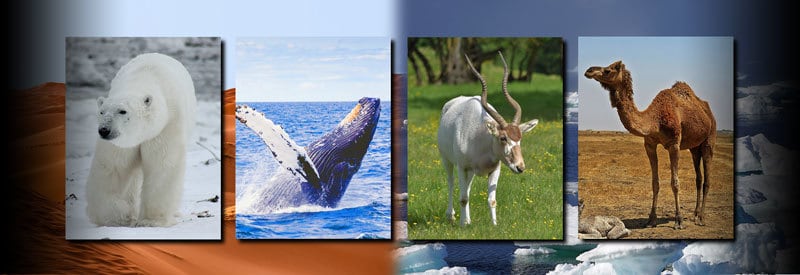
Human beings don't come naturally well-equipped when it comes to coping with very hot or cold weather conditions. Wild animals, though, seem to not only survive but thrive in extreme cold or hot conditions.
When it's hot, we need to remove unnecessary clothing and stay in the shadows or air-conditioned room to remain cool. When it's cold, we sometimes need to put on multiple layers of clothing and use the heat from a fireplace or heater to stay warm.
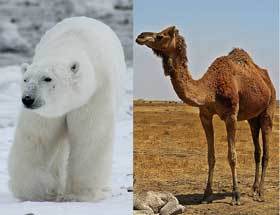
Arctic animals spend hours in the freezing waters or ice of the Arctic, while a desert animal can stay for hours in the middle of a desert in the blazing heat without showing any signs of struggle or discomfort.
The conditions in which these creatures live cannot be more directly opposed, but they have one thing in common. Each animal is completely at home in their respective environments, as harsh and inhospitable as they may be.
In this article, we are going to take a look at animals who call the scorching hot deserts their home. We will turn our focus to the opposite side of the spectrum, where animals live and thrive in the cold Arctic Regions.
Animals That Live In The Arctic
You will be surprised at the number of animals that live in and around the Arctic with its icy cold climate. Whether in or out of the water, most animals in these regions have the same characteristics that help them cope with the icy water and freezing weather.
One doesn't need to examine every single animal to find out which features allow them to survive the harsh Arctic conditions. But by identifying and listing the most commonly found animals in the region, you will be able to get a clear visual image of these features at work.
Commonly Found Animals In The Arctic
You will probably recognize the majority of animals listed in this section. The aim is not to provide a comprehensive list of all Arctic animals, though, but to highlight the animals that display the features that protect them against the cold.
To stay concise and to keep the focus primarily on the Arctic animals with the necessary features which allow them to survive, the list will be limited to seven animals:
- Whale
- Polar Bear
- Reindeer
- Walrus
- Musk Ox
- Arctic Fox
- Arctic Hare
As we discuss the characteristics and features that allow animals to thrive in freezing weather, it will become clear how each animal in the list makes use of one or more of these "weather-insulating" factors.
How Do Animals Survive In The Arctic
As this section will highlight, most animals living in the Arctic Regions share the same characteristics and habits that protect them from the harsh elements.
By examining how each of these features or habits work, you will be able to get a clear understanding of how living in subzero conditions is not just possible but preferable for these animals.
1) Thick Hair / Fur
Found in almost all Arctic animals are their thick coats of hair or fur. It not only protects against cold air penetrating the outside, but it also traps pockets of warm air close to the skin. It plays a big part in keeping the body and core temperatures warm.
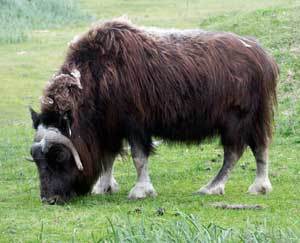
Some animals also grow an undercoat of hair, which helps to warm the body even further and trap pockets of warm air closer to the skin. The musk ox and arctic hair are two examples of animals who make use of these undercoats.
Some mammals, like the polar bear, also have oily hair. The oily substance helps to insulate the skin and keep the hair dry while swimming in the icy waters.
Other animals using their thick coats to protect them against the cold are the arctic fox and the reindeer.
2) Blubber
Blubber is nothing more than a thick layer of fat, generally found under the skin of animals, specifically marine animals living in and around the cold Arctic Regions. Blubber comes in varying degrees of thickness, depending on the size of the animal.
This layer of fat is located between the animal's skin and internal organs and muscles, acts as an insulator, able to block almost any cold from passing through. A second advantage is the ability of this layer of fat to serve as a food source during scarcity in resources.
Animals with thick layers of fat include whales, polar bears, and walruses.
3) Huddling
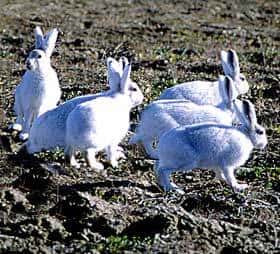
As most of us know very well, standing closely together for any amount of time, and we all get warm very quickly. In nature, especially in the Polar Regions, making use of this very efficient behavior allow animals to stay warm in otherwise unbearable conditions.
Huddling close together allows animals to feel and absorb each other's warmth. It also cuts down, and to a large extent, eliminates the movement of cold air around the body, helping animals to stay warmer as a group.
Animals that display this behavior include musk oxen, reindeer, and arctic hares.
4) Color Camouflage
As this feature of arctic animals is not directly related to coping with the weather conditions, not too much emphasis will be put on it in this article.
It is important to note that a large majority of polar animals have coats of fur/hair that appear white. This either a defense mechanism to blend it with the surrounding or used as a predatory advantage by carnivores.
Polar bears, arctic foxes, and arctic hares are all examples of animals that use their coats to disguise themselves.
Animals That Live In The Desert
At the opposite end of the spectrum, you will find animals and reptiles which live in regions with hot and dry climates. In this section, we are focusing on the creatures that make the hot deserts and semi-arid areas of our world their home.
Like animals living in Arctic Regions, any animal surviving in the harsh conditions of a warm and desert possess features and habits that not only help them to survive but thrive in these inhospitable areas.
To find out more about desert climate, you can read all about it in this article.
There are two specific conditions that desert animals have to cope with in order to survive:
- Extreme Heat
- Lack Of Water
By looking at some of the animals and reptiles commonly found in hot deserts and semi-arid regions, one will be able to get a clear understanding of what features they possess and the habits they display that enable them to survive the harsh conditions.
Animals That Live In The Desert
Some of the animals named in the following list may be familiar to you. It is because they are exceptionally well-equipped to handle the hot conditions and are well documented. As with arctic animals, the list of desert creatures will also be limited to a maximum of seven:
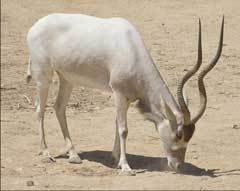
- Camel
- Mexican Coyotes
- Fennec Fox
- Gemsbok
- Addax Antelope
- Gila Monster
- Antelope Jackrabbit
As we discuss the characteristics and features that allow species to thrive in the hot desert climate, it will become clear how each animal & reptile in the list make use of one or more of these "weather-insulating" factors.
How Do Animals Survive In The Desert
In this section, it will become clear that many animals that live in these hot and dry areas use the same features and habits to survive:
1) Nocturnal Desert Animals
This behavior of animals allows them to escape the heat of the day by hiding in burrows, shallows, and the shade of rocks during the day. During the cold evening, they come out of hiding to feed, hunt, and are at their most active.
The Mexican coyote and Fennec fox are two small preditors that follow these lifestyles to help them survive in the desert.
2) Thick Fur
In the same way, arctic animals have thick fur to keep them warm, some animals living in the desert do have the same thick coat, but in order to stay cool by keeping the heat out.
The thick fur of camels protects against the heat from the sun reaching the skin. Similarly, the layer of hair on desert foxes has a light color that reflects the sun's rays. The same thick coat keeps them warm during cold winter nights.
3) Water Storage
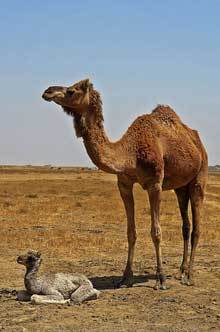
Some animals can go for days, even weeks, by storing water within their bodies for later use. Contrary to popular belief, it is not actual water that is stored in their bodies.
There is a false belief that the camel stores water in its hump (or humps) on its back. It is actually fat that is stored in the hump. Similarly, the Gila Monster is a poisonous lizard that also stores large quantities of fat in its tail.
When necessary, the fat can be used as a source of nourishment when no real food is available. During this process, water is also released, which can be absorbed and used by the bodies of both the camel and Gila Monster.
4) Kidney Function
On a biological level, the adaption of specific organs like the kidneys in the bodies of desert animals allows them to use a lot less water. In some animals, the kidneys are well adapted to prevent water loss.
For example, both the Addax antelope and camel's kidneys are able to concentrate their urine, making it possible for their bodies to retain more water. The fennec fox is another animal that has kidneys adapted to retain more water.
5) Oversized Ears
There are also quite a few desert animals that have huge ears. These vast surface areas allow the body to cool down much faster. As the creatures stay in the shade, the blood vessels in the ears allow large quantities of thermal heat to escape the body.
The Antelope Jackrabbit and Fennec fox are two animals that use these techniques to regulate their heat and keep cool.
There are other features like fur color that help both predator and prey to blend into their background. This, however, is not part of protection against the harsh weather conditions, so we will not be the focus of this post.
Conclusion
This article highlighted how both arctic and desert animals have features and habits that help them survive and thrive in extreme climates.
It will also be interesting to keep an eye on these creatures to observe how (or if) they are able to adapt as their environments start to change.
Never miss out again when another interesting and helpful article is released and stay updated, while also receiving helpful tips & information by simply clicking on this link .
Until next time, keep your eye on the weather!
